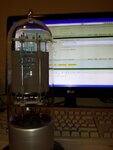NSunJ
Junior Member level 1
What are tubes ? are they capacitors or resistors ? or both ?
What are tubes ? are they capacitors or resistors ? or both ?
How can I create saturation without using tubes ?
What are tubes ? are they capacitors or resistors ? or both ?
How can I create saturation without using tubes ?
Last edited:
